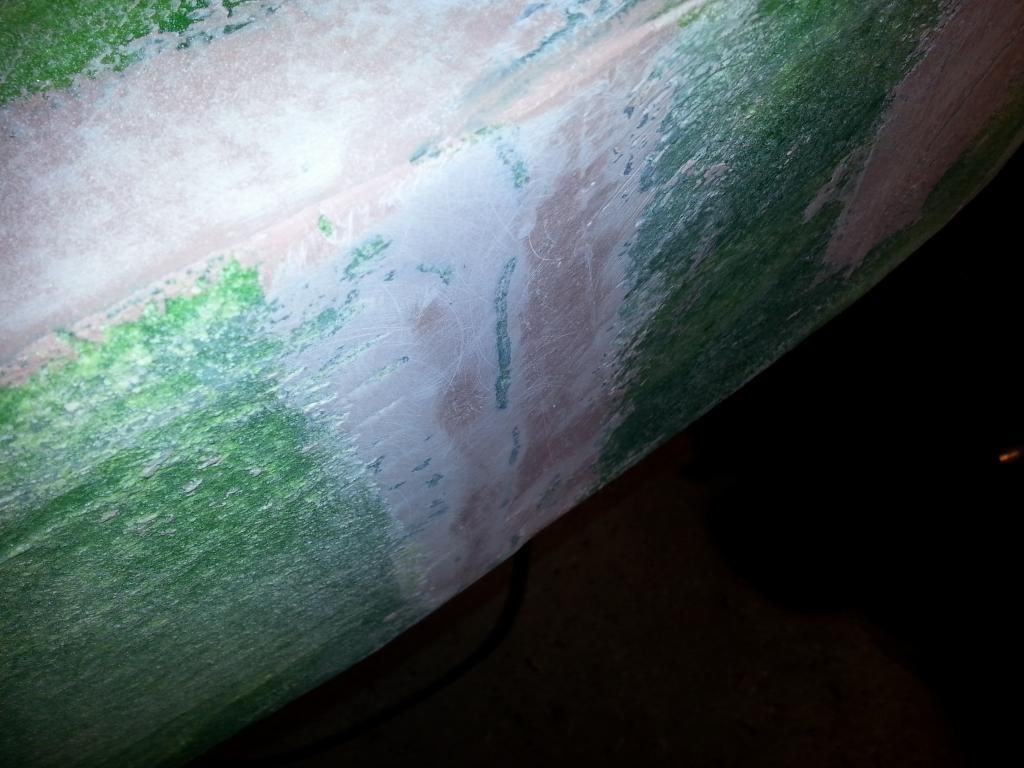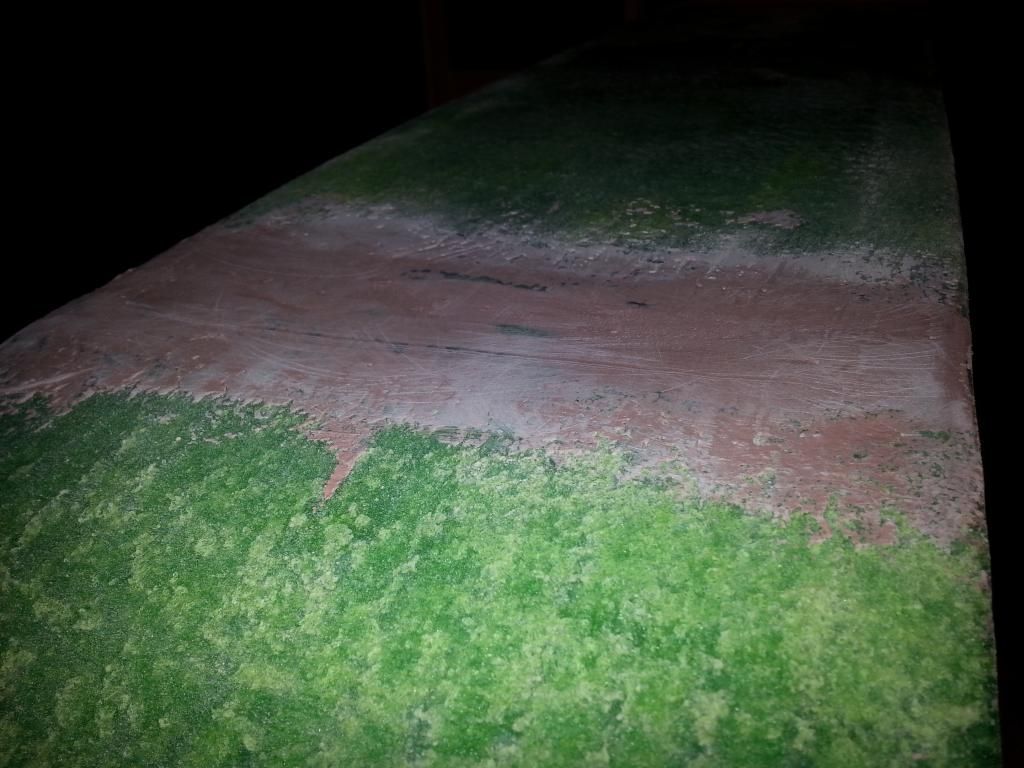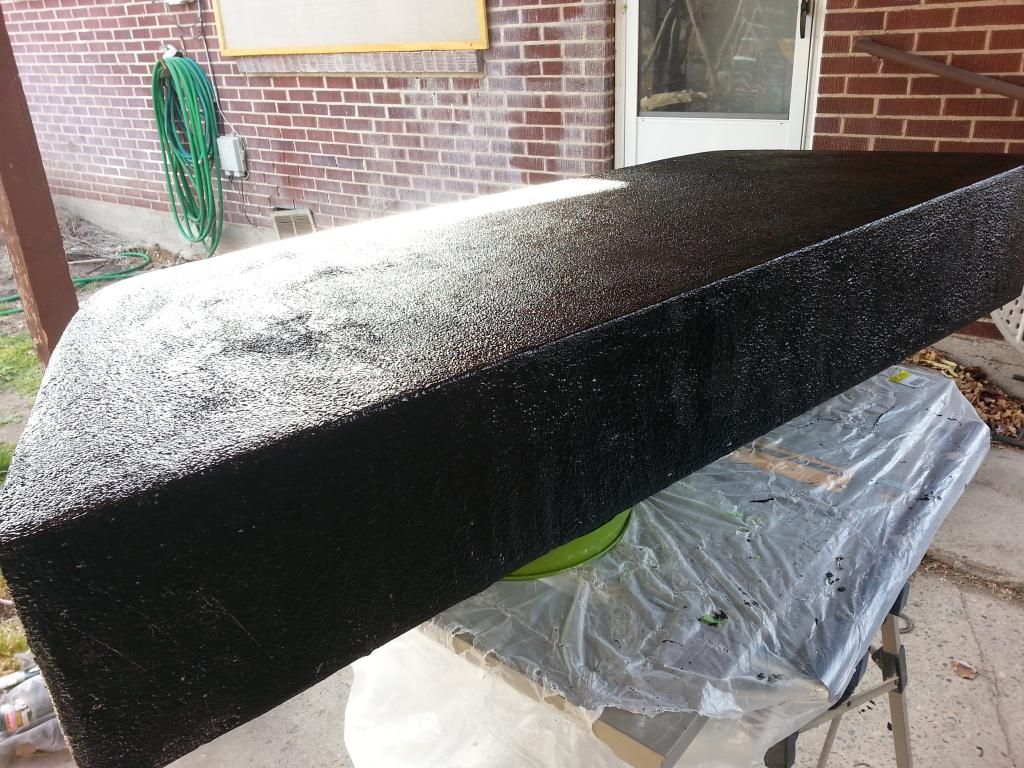- Location
- Stinkwater
An angle grinder with a worn out flap wheel cleaned up the bumps of folded and/or overlapped fleece nicely. A little bit of bondo took care of the rest.


A coat of bedliner went a long way towards hiding the difference in textures between fleece and bondo, but didn't completely mask them. Another coat would probably do the trick, but I ran out.

Fiberglass and bondo are fun to play with, thanks for the suggestion Chance! The fleece is very flexy, even with the fiberglass resin and bedliner over the top. I think next time I try a thing like this, I'm going to use actual fiberglass mat instead of fleece and see if that makes a difference.


A coat of bedliner went a long way towards hiding the difference in textures between fleece and bondo, but didn't completely mask them. Another coat would probably do the trick, but I ran out.

Fiberglass and bondo are fun to play with, thanks for the suggestion Chance! The fleece is very flexy, even with the fiberglass resin and bedliner over the top. I think next time I try a thing like this, I'm going to use actual fiberglass mat instead of fleece and see if that makes a difference.
